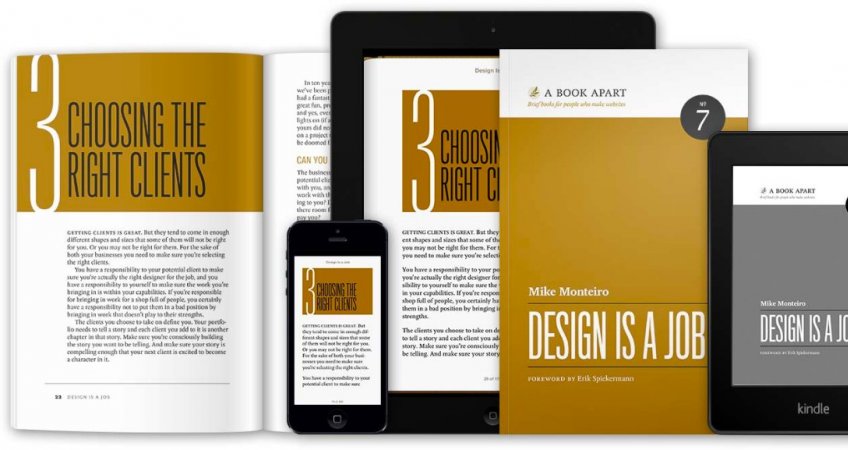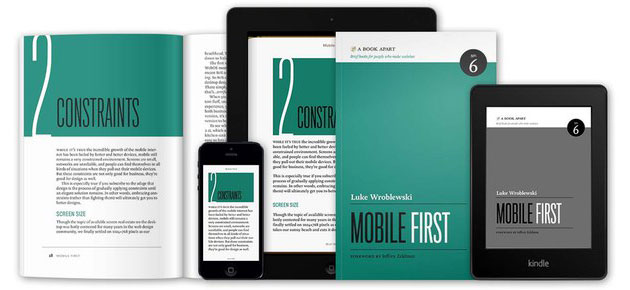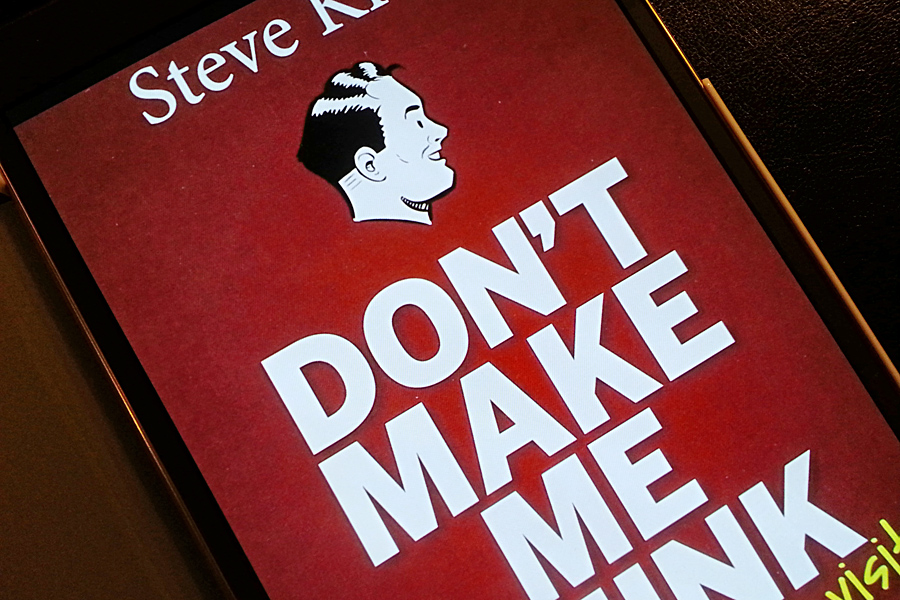Хороший дизайнер тот, кто постоянно и всесторонне развивается. С помощью этой подборки книг можно не только освоить основы веб-дизайна, но и узнать больше о психологии, маркетинге и жизни в целом.
1. Андрей Гаврилов "Веб-дизайнер на миллион"
Эта книга станет ответом на все вопросы человека, который только начал свой путь в веб-дизайне или задумывается об этом.
Андрей Гаврилов, основатель образовательного портала WAYUP рассказывает о работе веб-дизайнера: в чём она заключается, что необходимо уметь, чтобы достичь высот в этом деле, как искать клиентов и создать стабильный источник доходов.
Это практическое пособие, в котором изложен многолетний опыт Андрея. Прочитав книгу, вы убедитесь, что мечты работать удалённо и путешествовать может достичь любой, кто стремится к постоянному развитию и работает над собой.
2. Майк Монтейро «Дизайн — это работа»
В этой книге Майк Монтейро делится своим опытом и секретами работы веб-дизайнера. Он говорит о необходимости правильной постановки цели, умении презентовать свою работу, а ещё о необходимости постоянно учиться, слушать и смотреть.

Здесь изложено много практических советов по взаимодействию и общению с клиентом на всех этапах работы. Автор рассматривает конкретные ситуации, отмечая сильные и слабые стороны клиента и специалиста.
Эта книга как для начинающих, так и для опытных веб-дизайнеров, а также для программистов, собственников бизнеса и владельцев сайтов.
3. Андрей Гаврилов «Дело Жизни»
Книга не об отдельных инструментах веб-дизайна, а о жизни веб-дизайнера в целом. В этой книге вы найдете историю Андрея Гаврилова, основателя WAYUP. Путь человека от обычного студента до профессионального разработчика сайтов.
Автор на своём примере показывает, как обрести четкий и последовательный план развития своего Дела Жизни. У каждого из нас есть страсть к чему-то.
.png)
Эта книга для тех, кто готов к изменениям и жаждет перемен в своей жизни. Читайте, вдохновляйтесь, действуйте.
4. Майкл Микалко «Рисовый штурм и ещё 21 способ мыслить нестандартно»
Автор этой книги заслужил мировую известность благодаря своей креативности и изобретению способов мыслить нестандартно.
.png)
В своей книге Майкл Микалко собрал подборку техник креативного мышления. Разве это не то, что так необходимо веб-дизайнеру?
С помощью заданий, упражнений, игр и головоломок вы научитесь создавать оригинальные идеи, которые помогут не только в работе, но и в жизни. Также повстречаете вдохновляющие истории творческих прорывов, которые изменили мир.
5. Хизер Брэдли "Дизайнь. Современный креатифф"
Удовольствие от этой книги получат как новички в веб-дизайне, так и профессионалы с опытом. А всё потому, что в ней много юмора, а ещё множество полезных советов от практикующего дизайнера и вдохновляющие истории работы лучших дизайнерских агентств. Заслуживает внимания и визуальное оформление книги.
Хизер изложил 42 принципа дизайна, которые сделают проект веселее.

6. Скотт Макклауд «Понимание комикса»
В этой книге американский комиксист Скотт Макклаунд объясняет устройство комиксов, как они создаются, читаются и осмысливаются. А также исследует множество аспектов визуального взаимодействия.
Полученные из книги знания можно применять в любой сфере, связанной с работой с изображениями, в веб-дизайне в первую очередь.
Естественно, книга о комиксах написана в виде комиксов. Читать её легко и увлекательно.

Эксперты отмечают, что книгу стоит прочитать даже тем, кто якобы знает о комиксах всё. После прочтения вы станете смотреть на комиксы иначе.
7. Аарон Уолтер «Эмоциональный веб-дизайн»
Эта книга, автором которой стал ведущий дизайнер американской компании по маркетингу, отлично подойдёт для тех, кто только начинает свой путь в веб-дизайне. Она убережет от создания скучных однотипных сайтов, коих в Интернете немереное количество.

Аарон Уолтер делится своим многолетним опытом и рассказывает, как создавать сайты, которые будут вызывать положительные эмоции у посетителей. Радовать, удивлять, запоминаться. Сайты с яркой индивидуальностью — лучшее, что вы можете сделать, чтобы выделиться на фоне конкурентов и рассказать людям о продукте, который предлагаете.
8. Итан Маркотт «Отзывчивый веб-дизайн»
Книга Итана Маркотта на полках книжного магазина стоит всегда рядом с предыдущей книгой. Это ещё одно практическое руководство, в котором изложена информация не для сведения, а для применения и создания удобных сайтов.
Автор напоминает о необходимости шагать в ногу со временем и адаптировать сайты под устройства с маленькими экранами, поскольку с каждым днём растет процент пользователей, предпочитающих просмотр веб-страниц исключительно на смартфоне.

Кстати, книгу стоит прочитать не только веб-дизайнерам, но и маркетологам, программистам, владельцам сайтов и бизнеса. Даже опытные специалисты найдут там рекомендации, способные предотвратить ошибки в создании сайтов.
9. Люк Вроблевски «Сначала мобильные!»
Ещё одна книга, которая подчеркивает важность создания сайтов, которые одинаково хорошо выглядят на всех устройствах – от смартфона до десктопа. Причем Люк Вроблевски мобильную версию сайта ставит во главу. И это вполне оправдано статистикой, приводимой нами в статье "Адаптивная верстка: для чего нужна и как реализовать".

Автор советует начинать создание сайта с мобильной версии, объясняя при этом, в чем разница мобильной и традиционной версии сайта, от чего необходимо избавлять мобильные веб-страницы, а что, наоборот, обязательно должно присутствовать на них. Следуя его советам, вы сделаете сайт с удобным интерфейсом.
10. Стив Круг «Не заставляйте меня думать»
Книга, в которой сочетаются практичность, остроумие и здравый смысл. Именно поэтому книга, впервые изданная в 2000 году, и по сей день остается одной из самых рекомендуемых на тему юзабилити.
Автор – Стив Круг – юзабилити-консультант с более чем двадцатилетним стажем и опытом работы с такими крупными клиентами, как Apple, Lexus и Международный валютный фонд.
Книга поможет освоить веб-дизайнеру принципы создания сайтов с информативным дизайном и интуитивной навигацией.

11. Алан Купер «Интерфейс. Основы проектирования взаимодействия»
Впервые эта книга Алана Купера в соавторстве с Робертом Рейманом, Дэвидом Крониным и Кристофером Носселом была издана 20 лет назад. Но в прошлом году книгу переиздали с учётом всех изменений, произошедших за эти годы.
.jpg)
В книге говорится о том, что разработка любых цифровых продуктов, систем и сервисов должно быть ориентировано на человека и большую часть внимания стоит уделить проектированию поведения. То есть речь о целеориентированном подходе, когда внимание проектировщиков концентрируется на пользователе, его целях и ожиданиях от использования продукта.
12. Голден Кришна «Хороший интерфейс – невидимый интерфейс»
В своей книге Голден Кришна с юмором, остро критикуя всё, что мы видим на экранах, говорит о создании продвинутых технологий без цифровых интерфейсов. Автор делится идеями, которые позволяют выйти из плоскости экрана и принципами, позволяющими создавать инновации.
Эта книга отлично подойдет для новичков, расставит знания по полочкам и даст рекомендации, которые можно применить на деле, по вопросам интерфейсов. Пожалуй, это одно из главных изданий в своей области.
.jpg)
13. Уитни Кесенбери, Кевин Брокс «Сторителлинг в проектировании интерфейсов»
В этой книге авторы рассказывают про один из мощнейших инструментов маркетинга – сторителлинг и про то, как с его помощью создавать дизайн, который будет понятен и интересен пользователю.

Умение создавать и рассказывать истории при разработке дизайна сайтов должно быть в багаже каждого дизайнера.
Все, кто работает с интерфейсами и занимается пользовательским взаимодействием, найдут в этой книге идеи и методы для ежедневного использования в своей работе.
14. Фил Барден «Взлом маркетинга. Наука о том, почему мы покупаем»
Несмотря на название, эта книга не только для маркетологов. Веб-дизайнерам тоже пригодятся знания, которыми делится автор.
Фил Барден рассказывает о том, как мы совершаем покупки на примере крупных брендов, что нами руководит и что происходит в сознании при принятии решения. Автор на примере реальных рекламных кампаний показывает, что было сделано хорошо, почему она зацепила и почему аналогичная ей реклама провалилась.
Прочитав эту книгу, вы поймете, как с помощью пары действий можно изменить поведение покупателя.

Книги не дают ответы на все вопросы, по ним нельзя научиться всему, потому что в веб-дизайне, как и в любом другом деле, важна практика. Но книги позволяют сформировать теоретическую базу, на которую вы уже будете наращивать практические знания.
